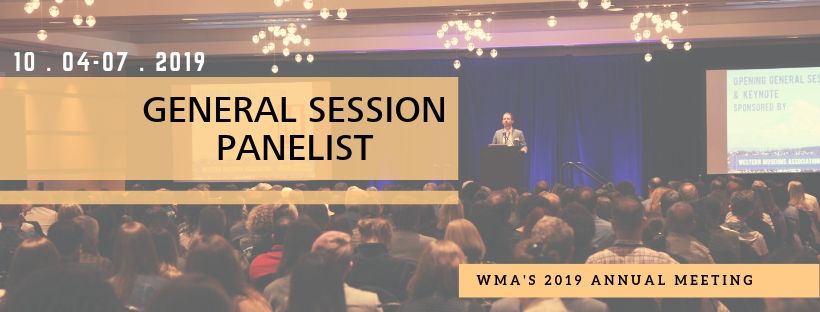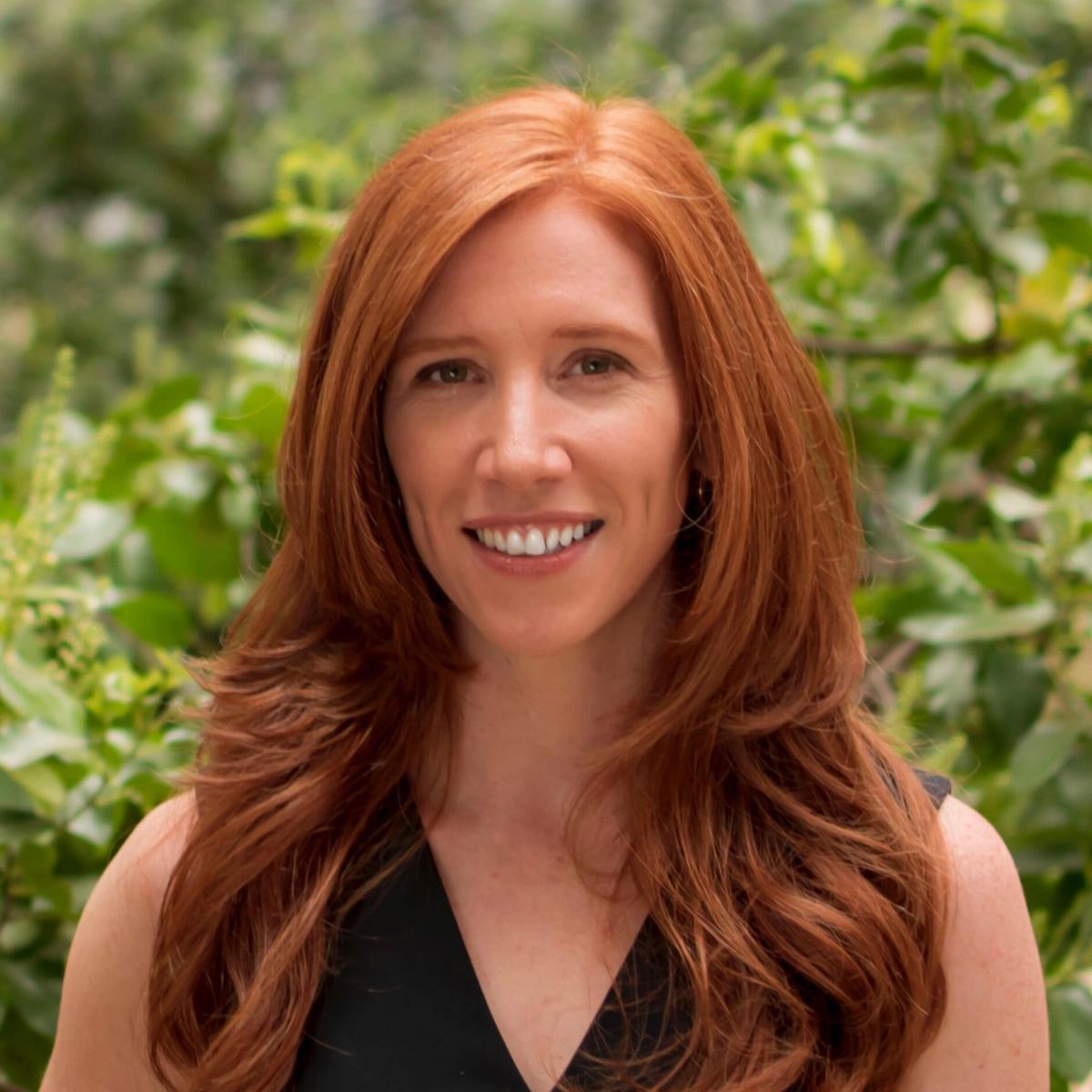
Moderated by Scott Stulen, Director & President of the Philbrook Museum of Art, WMA's 2019 General Session Panelists will share their approaches to institutional change, digging deep into the ways museums can ENGAGE with their communities, staff, and other museums.
The 2019 panelists include
Maren Dougherty • Seema Rao • Adam Rozan • Phillip Thompson
To introduce you to the moderator and four panelists, we have asked them to answer a few of our questions.
Take a look to see what Maren Dougherty has to say:
 Maren Dougherty
Maren DoughertyEVP, Communications and Visitor Experience, The Autry Museum of the American West
At the Autry Museum in Los Angeles, Maren Dougherty leads a division that includes Marketing, Communications, Membership, Visitor Services, Public Programs, and Education. Prior to joining the Autry in 2013, Dougherty was the director of external affairs for the Balboa Park Online Collaborative (BPOC), a groundbreaking museum technology project serving more than twenty cultural institutions in San Diego’s Balboa Park. In 2011, Dougherty was one of two BPOC staff to live in Balboa Park for 26.2 days for “Museum Marathon,” a social media campaign to showcase everything happening at the park and its cultural institutions. With a bachelor's degree from the Medill School of Journalism at Northwestern University, Dougherty has written for publications such as Fodor’s San Diego, National Geographic Adventure, New York Magazine, San Diego Magazine, and the San Diego Union-Tribune. A graduate of the Getty Leadership Institute's NextGen executive education program for museum professionals, she has presented at national and international conferences that include Museum Computer Network, Museums and the Web, and the Yeongwol International Museum Forum (Korea). She also served on the program committee for the IMLS WebWise Conference on Libraries and Museums in the Digital Age.
How did you get your start in museums?
Before transitioning to the museum field, I managed communications, advocacy, and fundraising for a nonprofit organization serving refugees and asylum-seekers. As a journalism school graduate, I continued to write on the side and, through this freelance work, became familiar with the San Diego-based Balboa Park Online Collaborative. After BPOC hired me for an online marketing and fundraising position supporting museums across Balboa Park, I began my crash-course in museums—reading, visiting, and learning as much as I could about their goals and how our organization could use emerging technologies to support their efforts.
What is your favorite thing about working in the museum field?
No question: The people. Beyond the Autry’s amazing staff and volunteers, I am constantly meeting museum professionals through conferences, program partnerships, and social media. Generally speaking, I find museum people to be incredibly thoughtful, creative, and collaborative. I have met some of my closest friends through museum work, and I feel fortunate to continue learning from my colleagues every day.
What do you think is the most pressing issue that museums are currently facing?
That’s a tough one! The first ones that come to mind include the deferred maintenance of many museum facilities, the competition for scarce leisure time among potential visitors, and the increased severity of weather and climate-related disasters. In California, wildfire season is particularly nerve-wracking.
I also spend a lot of time thinking about how to present objects and artwork connected to problematic individuals (e.g., filmmakers accused of sexual harassment through the #metoo movement) and artifacts such as firearms, which can provoke strong emotional reactions from visitors. At the Autry, we embrace the museum’s role as a gathering place for public conversation and debate, which requires substantial time and energy to consider appropriate context and approaches. Even then, our intent may not equal our impact, as people come to the museum with varied perspectives and might disagree with our decisions to have certain objects on view at all.
Regarding community engagement, what do you think is the most important thing to keep front and center?
Taking into consideration the various community engagement activities we pursue at the Autry, I posed this question to a few of my colleagues. We all agreed about the importance of building relationships that can be sustained, i.e. not for one-off purposes such as a new grant opportunity or temporary exhibition. As our Education Outreach Manager Katherine Herman stated: “Be clear about where your strengths lie, and more importantly, where they don’t. In the education department, for example, we are approached multiple times per year by math and science teachers. While we always entertain a discussion about a potential partnership, we almost never enter into a partnership with these teachers because the work they do does not fall naturally within the scope of our mission.” Nonprofit mission-creep happens easily, and that’s where bumpy experiences with community outreach and engagement can surface.
What are some tips for museum professionals working with groups from outside the museum?
As with any relationship, successful professional collaboration depends on communication, trust, and compatibility. Within the Autry’s Communications and Visitor Experience division, we partner with many different entities, from Native community groups to schools to other cultural institutions, and we have learned to start with small projects to understand the dynamics of the relationship before diving into larger efforts. It’s also important to remember that people communicate differently and have multiple demands on their time; email response time isn’t necessarily the best gauge of interest.
Do you have any recommendations for attendees as they prepare for WMA 2019?
If you are attending WMA for the first time, I suggest considering your primary motivations for attending WMA and planning time accordingly. If your goal is to build a network of peers who serve in similar roles at other museums, highlight relevant sessions in the conference program, identify a couple of key people in your area that you want to meet, and prioritize social functions like the affinity luncheons and happy hours. If you know you need to get some work done during the conference, plan to focus on it during sessions that aren’t as applicable to your work. (Don’t skip coffee breaks and other opportunities to meet people!)
On the other hand, if you strive to expand your breadth of knowledge related to museum practices, aim to attend conference sessions that sound obscure or less relevant to your day-to-day responsibilities, and talk to fellow attendees about challenges, trends, and opportunities they see in their areas of work. I also recommend following conference hashtags on Twitter (in this case, #wmaam2019) to observe conversations happening in other sessions and identify people you might want to meet while in Boise. ‘Hope to meet you in October!
You can follow Maren Dougherty on:
Twitter: @MarenReport • LinkedIn: MarenDougherty
________________________________________________________________________________________________________________________
Register to attend WMA 2019 in Boise, ID, October 4-7th.
Member Early Bird Registration Deadline is August 2nd.
Not a member? Click here to become a WMA member today!








Add new comment